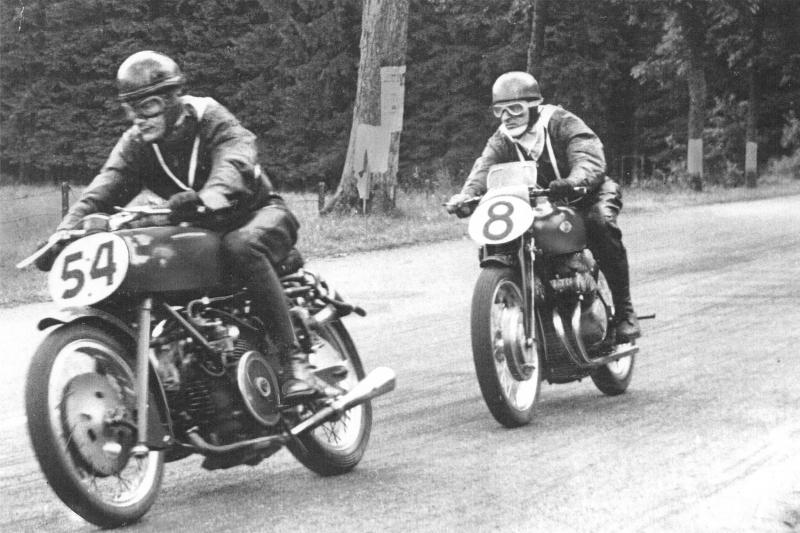While I photographed elite motorsport for nearly 20 years, I didn't attend that many motorcycle events.
Often it was motorcycles appearing on the same bill as open wheel race cars or touring cars at such events as the Winfield Super Challenge where just about every type of motorsport was featured from bikes, to cars to open wheel to drag racing. I was also at the last few Easter Bathrurst events, a circuit made famous by fast motorcycles but ultimately deemed too dangerous after a few fatal accidents.
Below I have chosen a few images from Eastern Creek MotoGPs with some of the notable riders of the time. Enjoy.
The Most Famous Riders of the Era
During the 500cc two-stroke MotoGP era, several riders left an indelible mark on the sport with their skill, bravery, and achievements. Here are some of the most famous riders of that era:
Wayne Rainey: Rainey is considered one of the greatest riders in the history of motorcycle racing. He won three consecutive 500cc World Championships from 1990 to 1992, riding for the Yamaha team. Rainey's aggressive riding style and tactical prowess made him a formidable opponent on the track.
Mick Doohan: The Australian rider dominated the 500cc class in the 1990s, winning five consecutive World Championships from 1994 to 1998. Doohan's fearless riding and unmatched speed earned him a reputation as one of the most dominant riders of his era.
Eddie Lawson: Lawson was a versatile rider known for his smooth riding style and exceptional racecraft. He won the 500cc World Championship four times in the 1980s, showcasing his ability to adapt to different tracks and conditions. Lawson rode from 1983 to 1992.
Kevin Schwantz: Schwantz was renowned for his aggressive riding style and spectacular overtakes. Despite winning only one World Championship in 1993, he was a fan favorite and earned a reputation as one of the most exciting riders to watch on the track.
Wayne Gardner: The Australian rider won the 500cc World Championship in 1987, becoming the first Australian to achieve this feat. Gardner's tenacity and determination made him a formidable contender in the highly competitive 500cc class.
Freddie Spencer: Spencer made history by becoming the youngest ever 500cc World Champion in 1983 at the age of 21. His exceptional talent and smooth riding style earned him the nickname "Fast Freddie" and solidified his status as a legend in the sport.
Kenny Roberts: Roberts revolutionized motorcycle racing with his aggressive riding style and innovative techniques. He won the 500cc World Championship three times in the late 1970s, becoming the first American to achieve this feat and inspiring a new generation of riders.
These riders, among others, defined an era of thrilling competition and unforgettable moments in 500cc two-stroke MotoGP racing, leaving an enduring legacy in the sport.
 |
| Daryl Beattie (AU) in 1994 riding the Marlboro Yamaha YZR500 |
The history of the 500cc two-stroke motorcycle Grand Prix is a tale of speed, innovation, and fierce competition that spans several decades. Here's an overview of its evolution:
Early Days: The 500cc class has been a part of motorcycle racing since the inception of the World Championship in 1949. Initially, these motorcycles were powered by four-stroke engines. However, the dominance of British and Italian manufacturers in the early years gradually shifted towards two-stroke engines, which offered more power-to-weight ratio and agility.
 |
| Enrico Lorenzetti, Arciso Artesiani, 1949 (source: MotoGP.com) |
Rise of Two-Strokes: By the 1970s, two-stroke engines started to dominate the 500cc class. Manufacturers like Yamaha, Suzuki, and Kawasaki began to develop high-performance two-stroke machines that pushed the boundaries of speed and technology. These bikes featured lightweight frames and powerful engines, making them formidable contenders on the race track.
Golden Era: The 1980s and 1990s are often regarded as the golden era of 500cc two-stroke racing. Legendary riders such as Kenny Roberts, Freddie Spencer, Eddie Lawson, Wayne Rainey, and Mick Doohan battled it out on the track, thrilling fans with their skill and bravery. The races were characterised by intense rivalries, dramatic overtakes, and nail-biting finishes.
Technological Advancements: During this period, significant advancements were made in motorcycle technology. Manufacturers invested heavily in research and development to improve engine performance, aerodynamics, and handling. As a result, top speeds increased, lap times plummeted, and records were shattered.
Regulatory Changes: Over the years, the governing body of motorcycle racing, the Fédération Internationale de Motocyclisme (FIM), introduced various rule changes to ensure fairness and safety in the sport. These changes often affected engine displacement, fuel regulations, and technical specifications, leading to shifts in bike design and performance.
Transition to Four-Strokes: Despite the popularity and success of two-stroke engines, concerns about emissions, noise, and fuel consumption prompted the FIM to gradually phase them out in favor of four-stroke engines. In 2002, the 500cc class was replaced by the MotoGP class, which featured 990cc four-stroke machines. This marked the end of an era for 500cc two-stroke racing.
Legacy The legacy of the 500cc two-stroke era lives on through its iconic bikes, legendary riders, and unforgettable moments. Many fans and enthusiasts fondly remember the sheer excitement and adrenaline rush of watching these high-speed battles unfold on the world stage.
In conclusion, the history of the 500cc two-stroke motorcycle Grand Prix is a storied one, filled with triumphs, challenges, and technological breakthroughs. It remains a cherished chapter in the rich tapestry of motorcycle racing history.





No comments:
Post a Comment